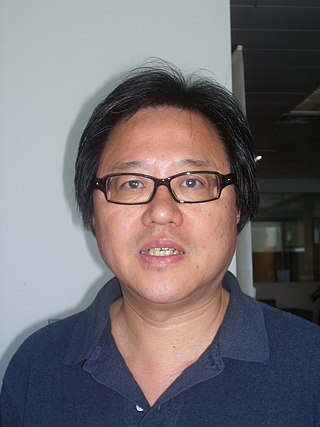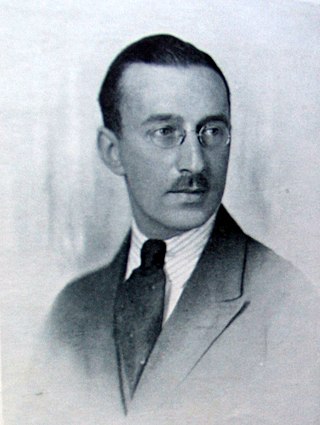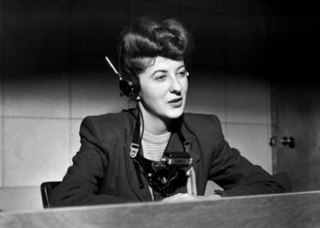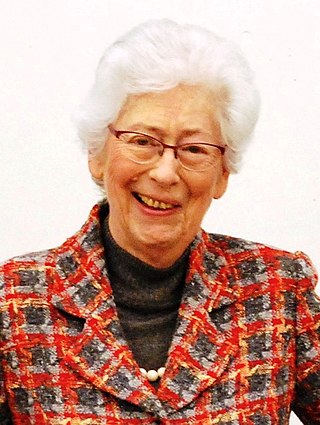Interpreting is a translational activity in which one produces a first and final target-language output on the basis of a one-time exposure to an expression in a source language.

Alberto Reyes is a Uruguayan classical pianist, and a former United Nations translator.

Jeffrey Kin-Cheung Tao is a senior interpreter of the Chinese Interpretation Section at the United Nations headquarters in New York City.

Jean Herbert was one of the first generation of interpreters for the United Nations organization. He was a former chief interpreter of the United Nations interpretation service in New York City.

Igor Korchilov is a top-level Russian-English conference interpreter who worked with Soviet leader Mikhail Gorbachev from 1987 to 1990, a period that covered the Cold War era.
Elisabeth Heyward was one of the participating interpreters during the Nuremberg Trials (1945–1949) held in the city of Nuremberg, Germany after World War II. She was the wife of Dick Heyward, former senior deputy executive director of UNICEF. Her son is former CBS News president Andrew Heyward.

Paul-Otto Schmidt was an interpreter in the German foreign ministry from 1923 to 1945. During his career, he served as the translator for Neville Chamberlain's negotiations with Adolf Hitler over the Munich Agreement, the British Declaration of War and the surrender of France.
Telephone interpreting connects human interpreters via telephone to individuals who wish to speak to each other but do not share a common language. The telephone interpreter converts the spoken language from one language to another, enabling listeners and speakers to understand each other. Interpretation over the telephone most often takes place in consecutive mode, which means that the interpreter waits until the speaker finishes an utterance before rendering the interpretation into the other language. As the use of the telephonic modality is increasing it is allowing users to access an interpreter immediately, regardless of time and location.
The Japanese Federation of the Deaf (JFD) is the national organization of the Deaf in Japan. JFD is also a member organization of the World Federation of the Deaf.
The Translators Association of China (TAC) is a national association for translation studies in China. Founded in the 1980s TAC was part of the academic response to the national Economic Reform in 1978. The incumbent President of TAC's 6th Executive Committee is the former Chinese Foreign Minister Li Zhaoxing, who in the meantime chairs the Foreign Affairs Committee of China.
Teddy (Thadée) Pilley was a linguist and conference interpreter.

George Frankham Shell known as George Gerard Shelley was a British linguist, author and translator who travelled in Imperial Russia before and during the Russian Revolution. He became a priest and lived in a community of the Oblates of St. Joseph. He was ordained in March 1950 as a bishop in the Old Roman Catholic Church in Great Britain (ORCCGB). In 1952 he became the third archbishop.
The Institute of Intercultural Management and Communication or ISIT is a French Grande École.
The Faculty of Translation and Interpreting (FTI) is a faculty of the University of Geneva in Switzerland.

Alan Gordon-Finlay was a British engineer and inventor of Scottish descent born in Australia. He is best known for having co-created the Filene-Finlay simultaneous interpretation system at the League of Nations in Geneva after the First World War, the first of its kind and the fore-runner to modern interpretation systems in use throughout the world today. A patent was purchased by IBM in 1930, taking it to global production.
ASL interpreting is the translation between American Sign Language (ASL) and another language, typically English. ASL interpretation is common in professional environments where deaf people interact with the wider community, including medical, legal, educational, mental health, vocational, and other environments. Interpretation may be consecutive or simultaneous, and pairs or teams of interpreters may engage in different interpreting styles. ASL interpretation has been regulated by the Registry of Interpreters for the Deaf since 1964. Many American universities offer undergraduate programs in ASL interpretation, and some graduate programs exist for the subject.

Susanna Vernon was a pioneer conference interpreter, one of the first to practice simultaneous interpretation, in which the interpreter interprets while the speaker is still speaking.
Simultaneous interpretation (SI) is when an interpreter translates the message from the source language to the target language in real-time. Unlike in consecutive interpreting, this way the natural flow of the speaker is not disturbed and allows for a fairly smooth output for the listeners.

Marianne Lederer is a French translation scholar. Lederer further developed the Interpretive Theory of Translation together with Danica Seleskovitch, who first proposed the theory. Lederer also published several works on translation and interpreting pedagogy. Her works have greatly influenced interpreting and translation research and teaching internationally.












